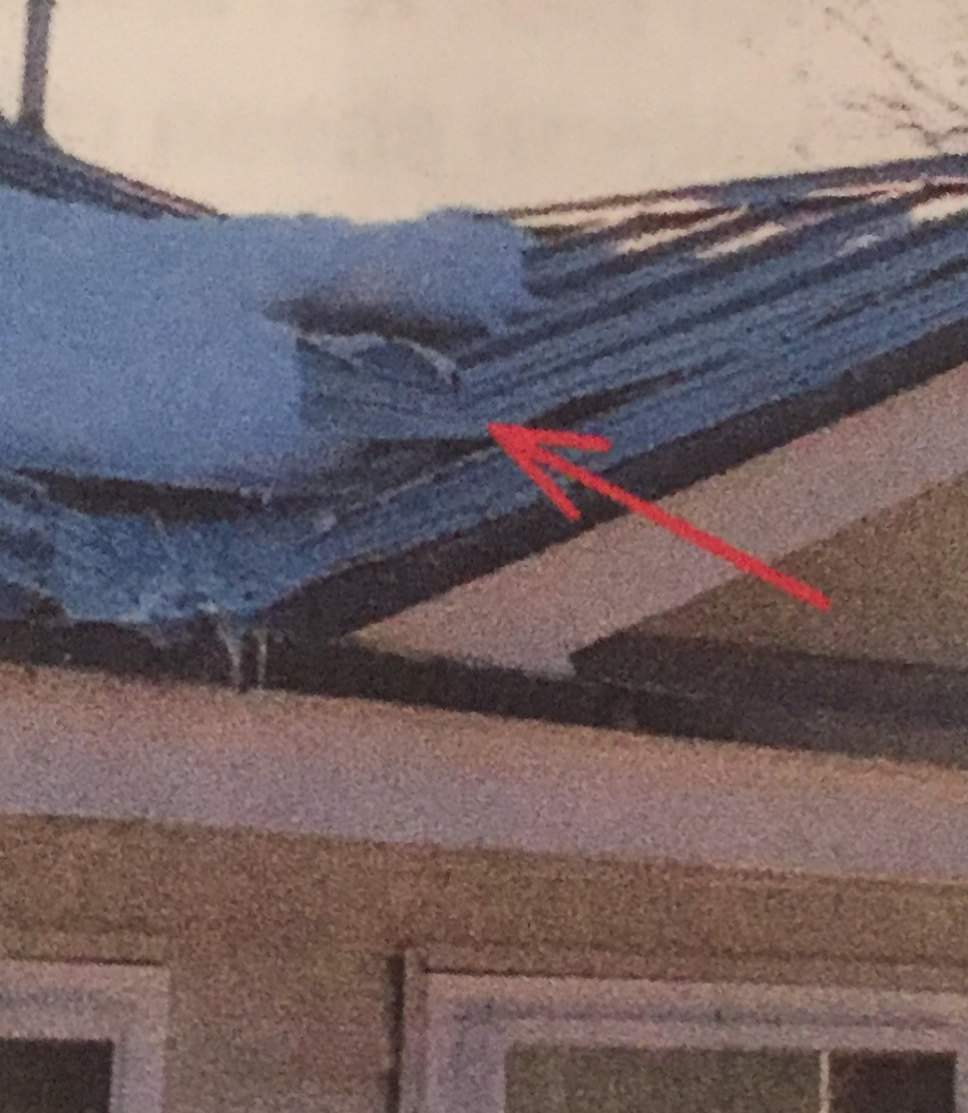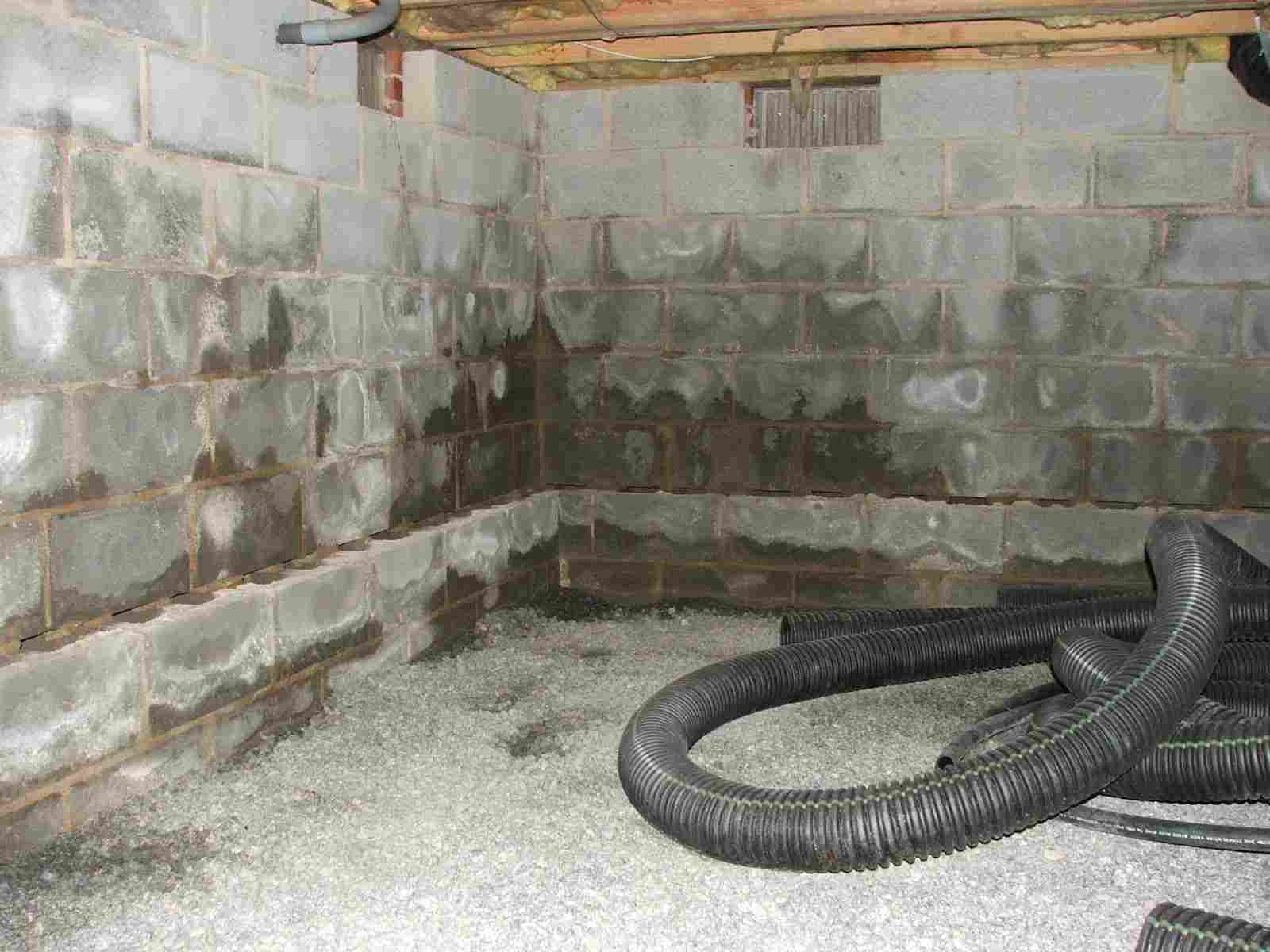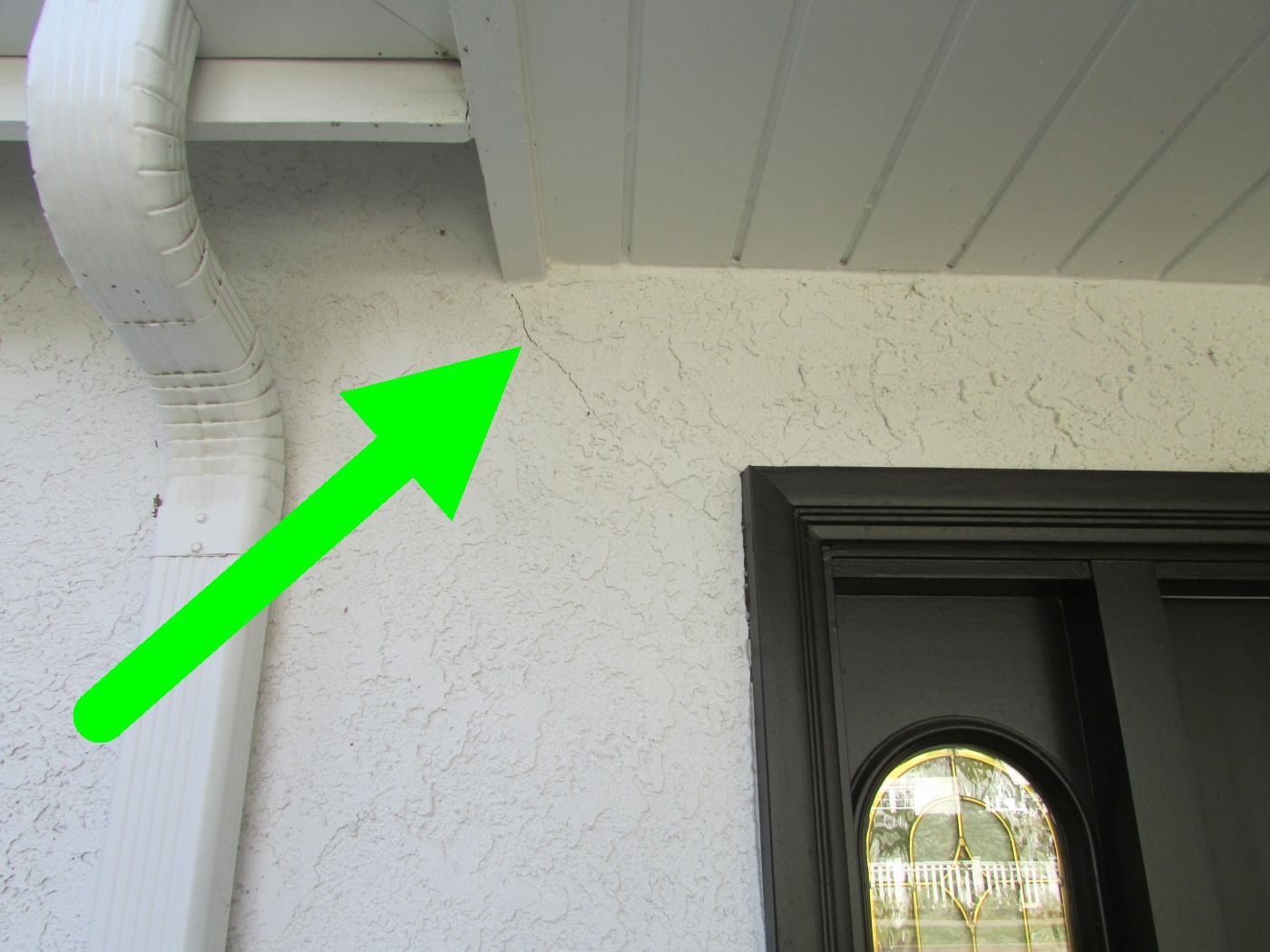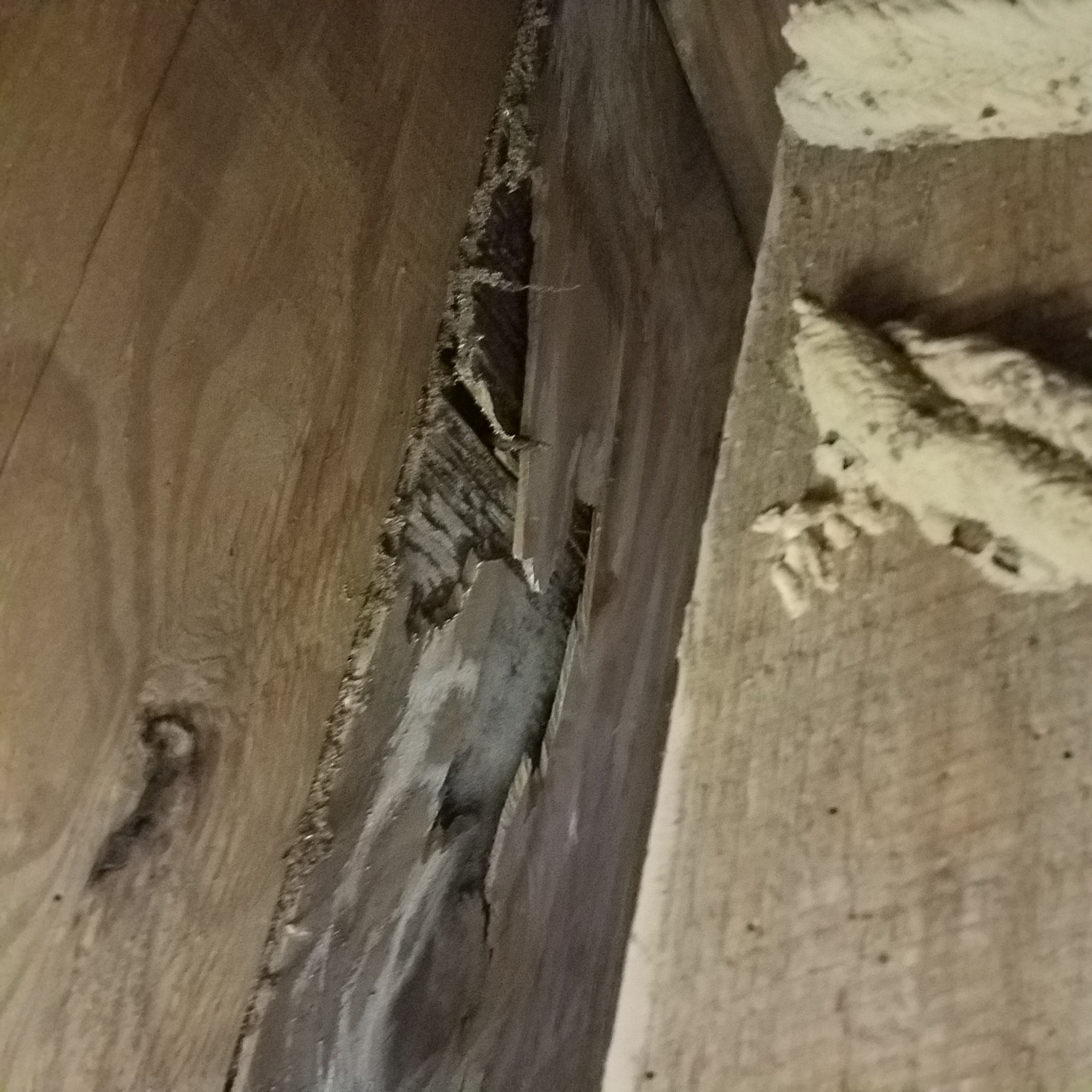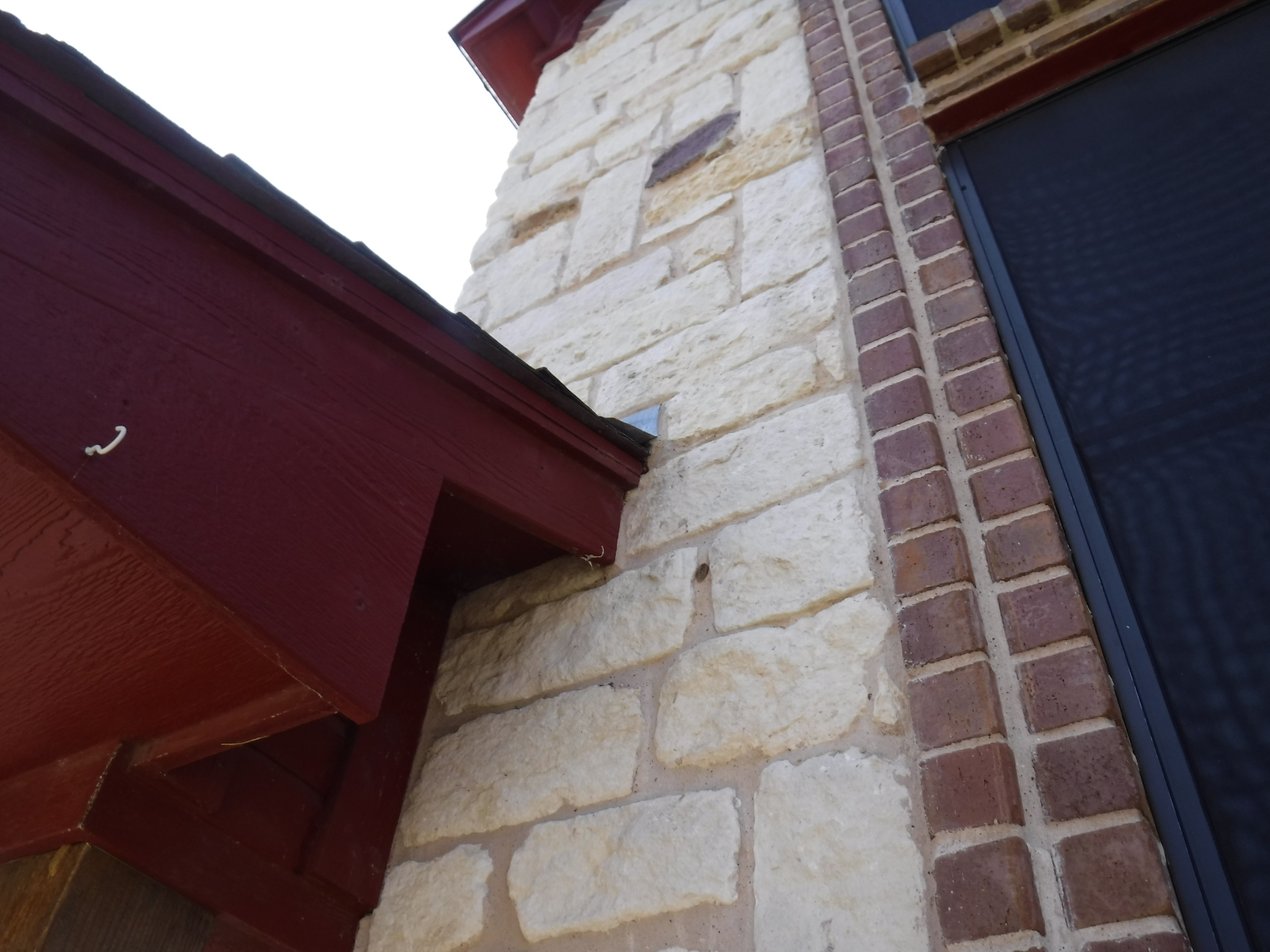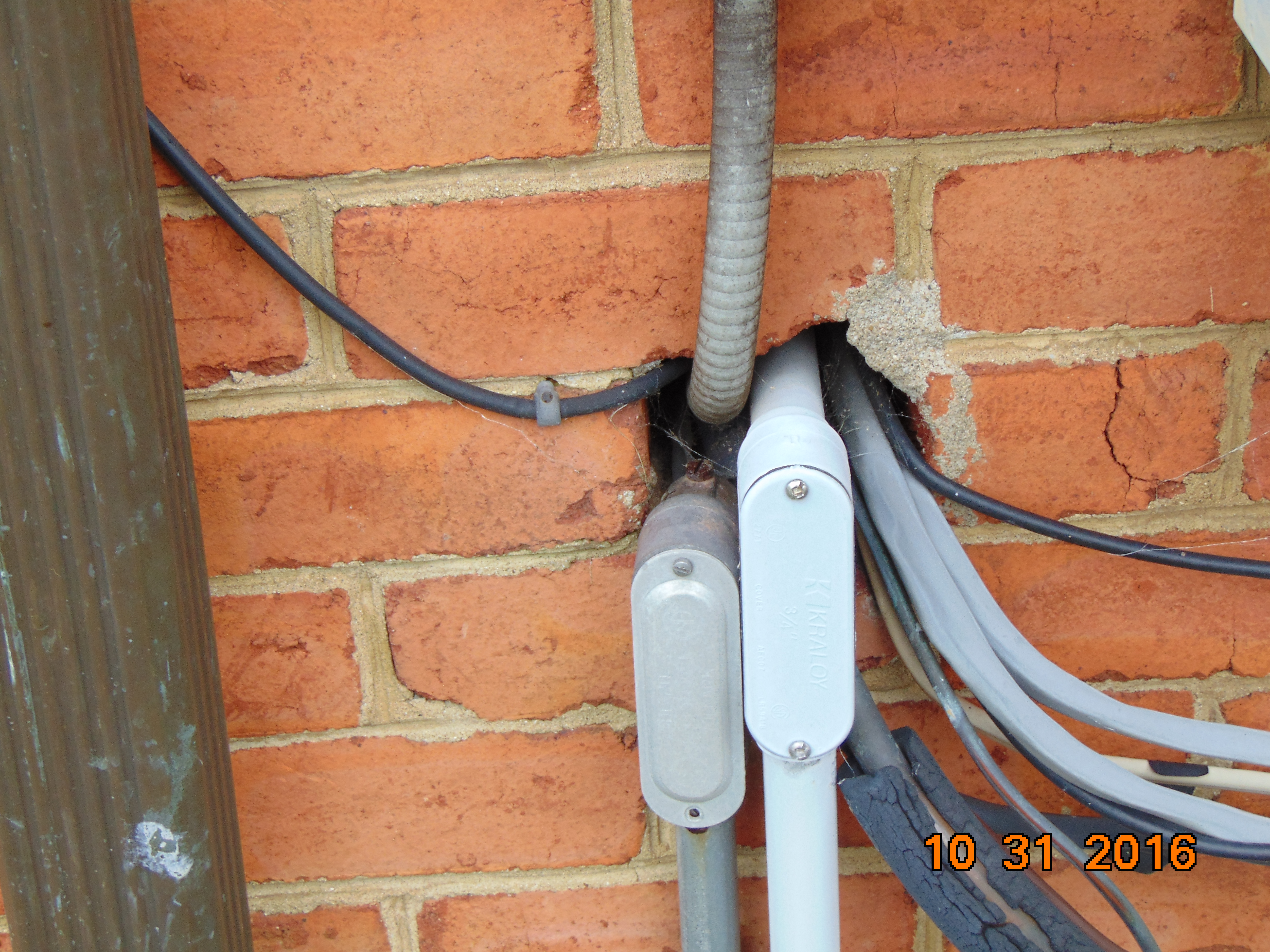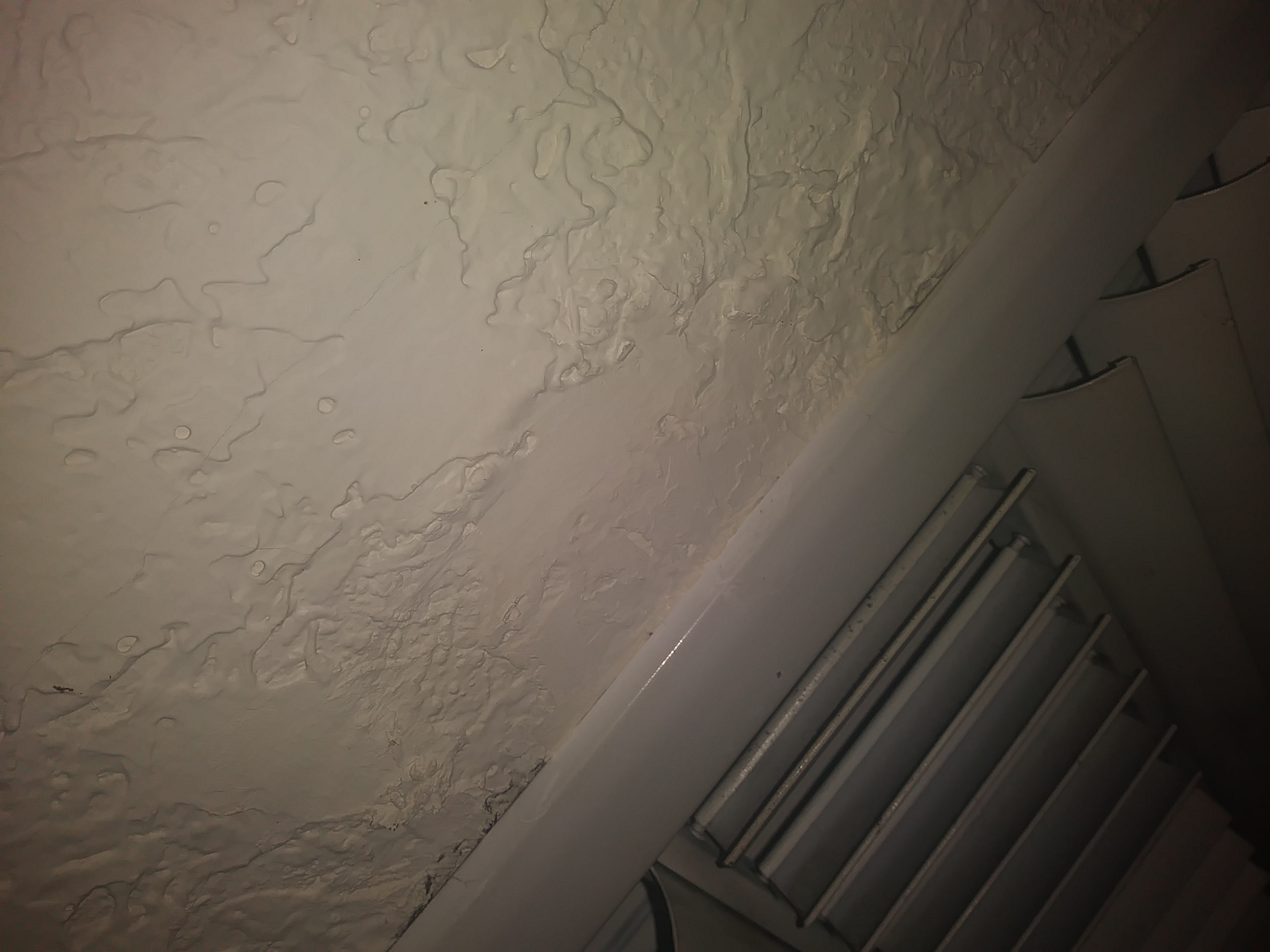This metal roof has ice damage. The damage was caused by ice damming. The ice damming was caused by inadequate insulation in the attic which caused melting and refreezing of the snow on the roof. Recommendation is to have insulation and roof checked by professional for repair.
Basic waterproofing for basements:
Properly waterproofing a basement correctly is very important. Ensure that water is diverted away from the foundation. Wet or flooded basements can cause toxic mold contamination, building rot and foundation collapse. Poor roof drainage and surface runoff due to gutter defects and improper site grading are the most common causes of wet basements.
This photo of the basement show water intrusion. I would need to take a look outside to see what is going on where the ground meets the basement wall. It could be the downspouts, or slope of the ground running into the house that is causing the basement to be penetrated with water.
Protect Your Property From Water Damage was the article I read about. I learned that the water can come from different sources. Roof leaks, HVAC, Leaks in wall, doors or windows can have lead to water damage that could cost lots to fix.
Roofing shingles are a very important part in the prevention of water and or moisture entering the dwelling however it all starts with the proper installment of the roof sheathing and underlayment. If any one of these installments are incorrect then rainwater could enter the home and cause significant damage to the interior
Moisture intrusion: Moisture intrusion can be labeled as being one of the most devastating problems in construction today. If the proper steps are not adhered to moisture intrusion can lead to the following results. Interior damage , serious health issues , mold and uncomfortable living experiences.
Common minor cracks were observed in the exterior stucco siding suggesting structural movement has occurred. As the wood framed walls settle, expand, and/or contract, the stucco siding tends to crack. The location, size, shape of these cracks is common. These cracks may need to be sealed in the future to avoid moisture intrusion.
The garage firewall is compromised along the south side of the garage. Proper separation between the garage and house proper is recommended. The walls and ceiling of the attached garage should be well sealed where they abut the interior of the home for your safety.
Moisture intrusion noted in this photo, due to poor flashing on roof structure above. This is located on and exterior porch attached poorly to the residence. Improperly flashing was used for the shingles system that was installed. Caused serious damage to the structure.
I read an article on steel column usage in residential construction in lieu of timber. The article addressed the pros and cons of both. A 3" column appears to be the minimum column size used in most applictions. Adjustable stell columns are allowed.
The picture that I used is from a recent inspection. The picture shows the lack of kickout flashing in the area that the exterior veneer comes into contact with the roof covering. Kickflashing is needed in this location to divert water into gutter.
The article I choose was on shrinkage cracks in concrete. It covered the many different types of cracks as well as the causes of many of them. It went into detail the types of cracks and described them to the reader.
Protrusions thru exterior walls should all be sealed. Missing caulk or sealant was observed at several locations of wall penetrations throughout the home’s exterior. Recommend re-caulking and sealing as needed to prevent moisture and pest intrusion by a qualifed technicain.
All protrusions on exterior walls and roofs should be sealed. Missing caulk or sealant was observed at several locations of wall penetrations throughout the home. Recommend re-caulking and sealing as needed to prevent moisture and pest intrusion by a qualified technician.
Some basement sections were not evaluated due to lack of access from the following conditions: finished walls and/or ceilings and couldn’t be fully evaluated. However slight water damage could be observed on surface of paneling. The cause is unable to be determined. There are a number of potential serious problems that could be hidden behind the panel.

I did an essay on an article called “Protect Your Property From Water Damage”
Water just like fire is an incredible element and necessary to our survival how every when we lose our control over it, it can lead to incredible destruction. The homeowner will be wise if he or she spend some time learning about the interaction with water and its possible destruction of their greatest investment. There are components in the duration of a homeowners life that are designed to handle varying levels of moisture from very little like the contents of the home to very much like the bathtub or roof.
The home is constructed in a way and with proper maintenance should always direct water to its intended location for its intended purpose. Beginning with the largest quantity of water homeowner will ever have to deal with that is rain and snowfall the exterior of the home is design to shed this water and to get it as far away from the home as possible. The silent destructive source of water which is of greatest concern is that which is contained in the air we breathe. The system making up a home as designed to allow the water in the air to be distributed in such a way that it never reaches the point condensation collecting in places where will be destructive.
I think the homeowner understands the battle they will always have this beautiful element they will also understand the need to hire the right professionals to install products the material to keep those systems properly maintained.
Its a little hard to see in the picture but I noticed some deterioration around the air-conditioning supply vent in the living room area of my home. The stucco was “bubbled up” and when I probed it gently some material came loose. Further inspection of the duct work in the attic is needed to see if there is unconditioned air entering the system causing condensation.
I chose a graphic depicting a downspout graphic. The picture shows how water leaves the downspout onto a surface that is supposed to slope away from the foundation. The graphic also shows a buried drain that also helps carry water away from the foundation.
Pictured is a basement that has signs of moisture intrusion. The visible white powdery substance on the walls is likely efflorescence, or salt left over from water that has evaporated off of the concrete.
One way to determine if this is efflorescence or mold, is to crumble a bit off. If it turns to a dusty powder when rubbed between a finger and thumb, it is more than likely efflorescence.
Without knowing anything else about this photo, I would assume that either downspouts are draining into the foundation, or that the grading of the yard is not sufficient to direct water away from the foundation.

Moisture problems can slowly develop and cause damage over time. Unless the problem has been there for a long time, it is likely that there are no outwardly visible signs of moisture problems. Utilizing infrared camera technology, and moisture meters allow the home inspector to essentially “See through walls” and find hot spots for moisture activity.
